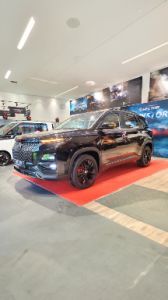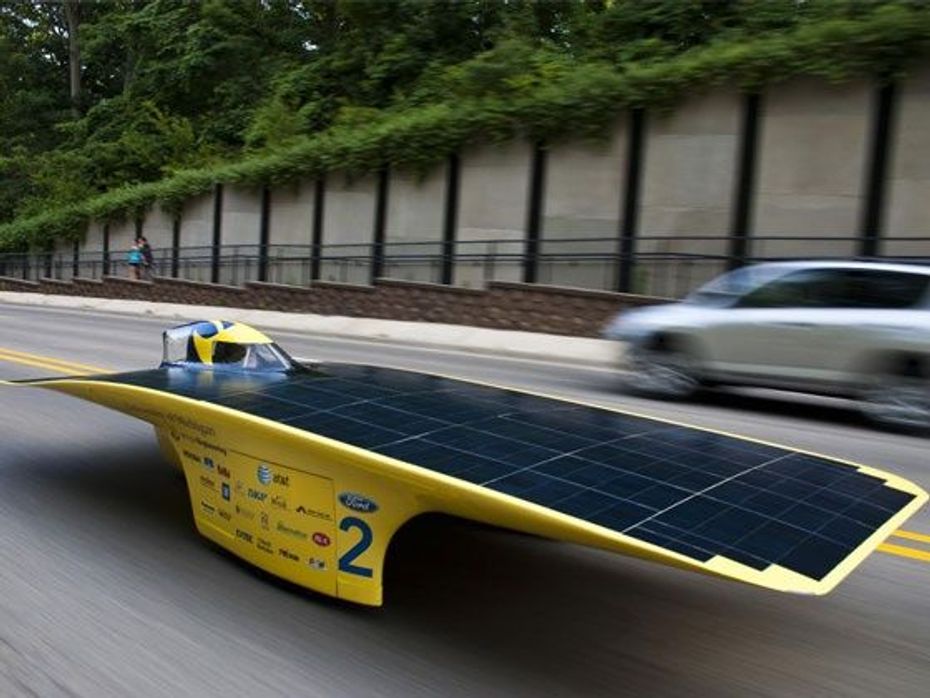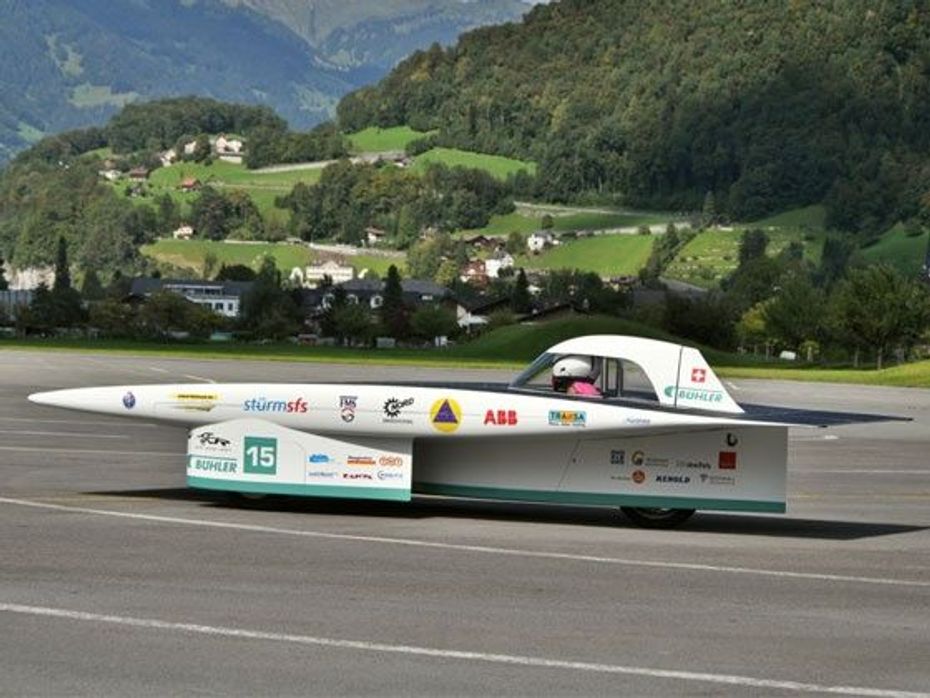Explore all New Cars of 2024
 MG Hector Blackstorm Edition Detailed In 8 Pics
MG Hector Blackstorm Edition Detailed In 8 Pics


The quest for alternative sources of power for automobiles explored the possibility of solar power. As the name suggests, solar power is acquired by absorbing the sun’s energy in the form of sunlight.
On solar vehicles, light energy is absorbed by photovoltaic (PV) cells arranged on frames called solar panels that are exposed to direct sunlight. When sun light hits the PV cells on a solar panel, it charges the electrons on the panel (that is usually made of silicon) creating an electrical current. This electric current is converted to a proper system voltage by power trackers, after which the electric current is stored in the onboard battery on a solar vehicle.
The electric charge in the battery can be used by an electric motor to power the wheels of a solar vehicle. A motor controller determines the amount of power to be sent to the wheels of a solar vehicle depending on the throttle input by the driver.
A solar vehicle has numerous solar panels fitted over its body panels. Naturally, the size of the vehicle determines the number and size of solar panels that can be mounted on a solar vehicle. To put it simply, more the merrier is the principle in this case. More light energy absorbed by the sun higher the amount of electricity generated.

Solar power has been used to drive vehicles as a showcase of the technology. However, in the real world this technology never caught on mainly because high amounts of electricity cannot be generated by solar panels. Also, sunlight is only available during the day time. Cloudy days don’t help either.
As a result, solar vehicles are made of lightweight body panels and are usually one seater vehicles as they do not generate enough power to carry too much load. The lightweight body panels of solar vehicles compromise on crash worthiness of a vehicle making them unsafe and illegal as they do not comply with safety standards for vehicles. These vehicles also lack features of conventional vehicles as there is no extra power to operate audio systems, air conditioning systems, satellite navigation units or even power windows for that matter.
Solar vehicles have been rendered hugely impractical and unsafe, this is why they have never been considered for mainstream production.
However, mainstream car manufacturers have considered solar power for their concept cars on a different level. Smaller solar panels have been incorporated on concepts that charge the vehicle’s battery used to power various electrical components such as audio systems, interior lights, etc. An example of this was the 2008 Cadillac Provoq concept. This helps in reducing fuel consumption as the engine does not have to charge the battery of a vehicle.
India's largest automotive community